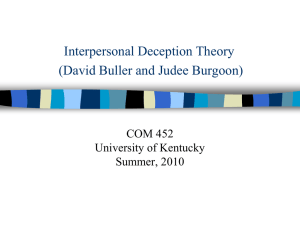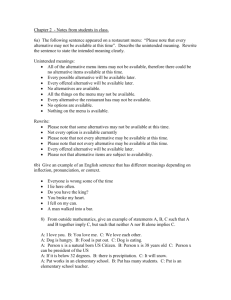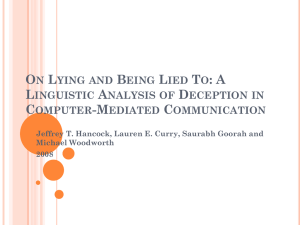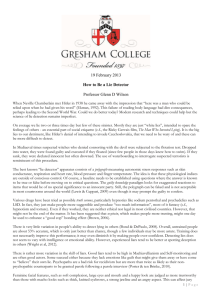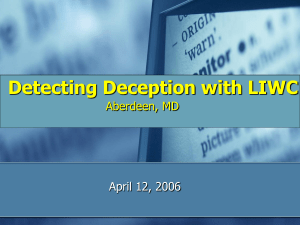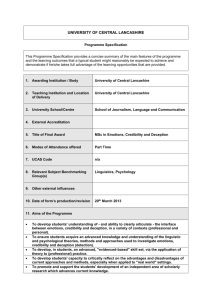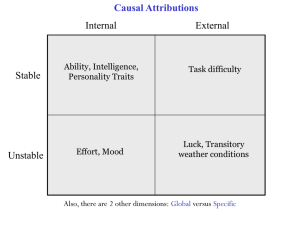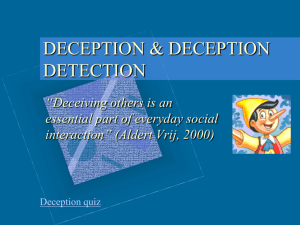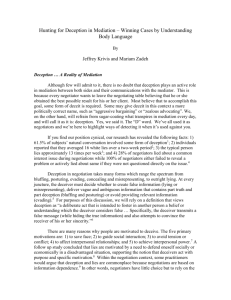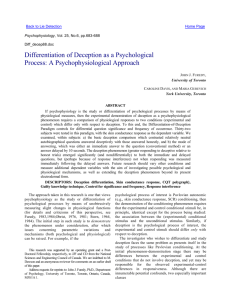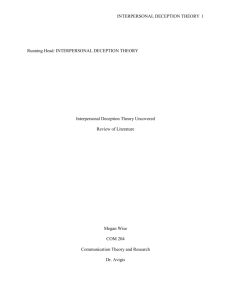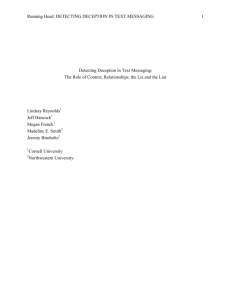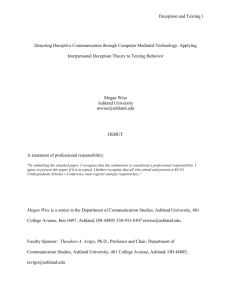Establishing Credibility in Criminal Court
advertisement
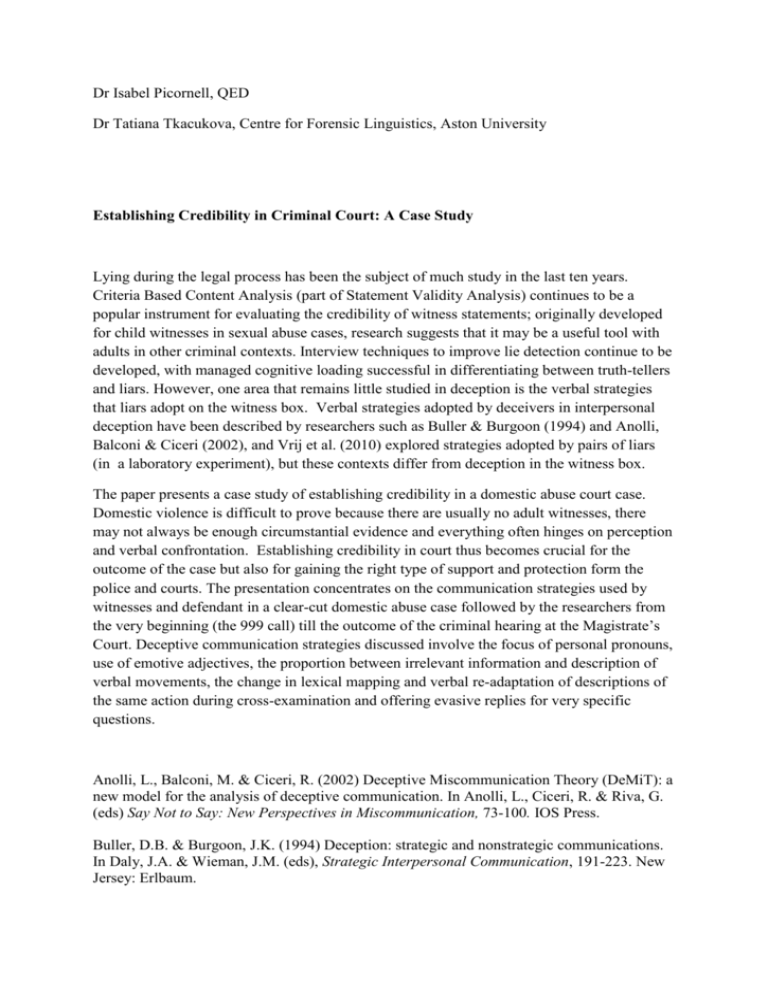
Dr Isabel Picornell, QED Dr Tatiana Tkacukova, Centre for Forensic Linguistics, Aston University Establishing Credibility in Criminal Court: A Case Study Lying during the legal process has been the subject of much study in the last ten years. Criteria Based Content Analysis (part of Statement Validity Analysis) continues to be a popular instrument for evaluating the credibility of witness statements; originally developed for child witnesses in sexual abuse cases, research suggests that it may be a useful tool with adults in other criminal contexts. Interview techniques to improve lie detection continue to be developed, with managed cognitive loading successful in differentiating between truth-tellers and liars. However, one area that remains little studied in deception is the verbal strategies that liars adopt on the witness box. Verbal strategies adopted by deceivers in interpersonal deception have been described by researchers such as Buller & Burgoon (1994) and Anolli, Balconi & Ciceri (2002), and Vrij et al. (2010) explored strategies adopted by pairs of liars (in a laboratory experiment), but these contexts differ from deception in the witness box. The paper presents a case study of establishing credibility in a domestic abuse court case. Domestic violence is difficult to prove because there are usually no adult witnesses, there may not always be enough circumstantial evidence and everything often hinges on perception and verbal confrontation. Establishing credibility in court thus becomes crucial for the outcome of the case but also for gaining the right type of support and protection form the police and courts. The presentation concentrates on the communication strategies used by witnesses and defendant in a clear-cut domestic abuse case followed by the researchers from the very beginning (the 999 call) till the outcome of the criminal hearing at the Magistrate’s Court. Deceptive communication strategies discussed involve the focus of personal pronouns, use of emotive adjectives, the proportion between irrelevant information and description of verbal movements, the change in lexical mapping and verbal re-adaptation of descriptions of the same action during cross-examination and offering evasive replies for very specific questions. Anolli, L., Balconi, M. & Ciceri, R. (2002) Deceptive Miscommunication Theory (DeMiT): a new model for the analysis of deceptive communication. In Anolli, L., Ciceri, R. & Riva, G. (eds) Say Not to Say: New Perspectives in Miscommunication, 73-100. IOS Press. Buller, D.B. & Burgoon, J.K. (1994) Deception: strategic and nonstrategic communications. In Daly, J.A. & Wieman, J.M. (eds), Strategic Interpersonal Communication, 191-223. New Jersey: Erlbaum. Vrij, A., Mann, S., Leal, S. & Granhag, P.A. (2010) Getting into the minds of pairs of liars and truth tellers: an examination of their strategies. The Open Criminology Journal 3, 17-22.
